#mppa code
Explore tagged Tumblr posts
Photo
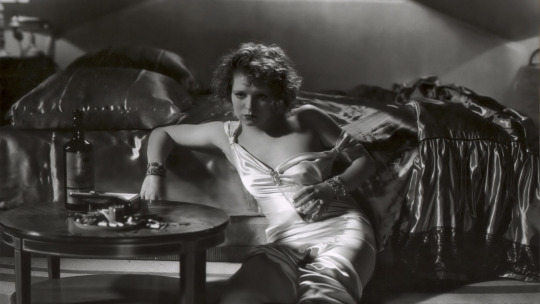
Savage Cinema.
From anarchists and adultery to milk baths and massacres, Matthew Turner shares five of the weirdest and wildest highlights of Hollywood’s pre-Code era, as #PreCodeApril comes to a close.
Pre-Code April was directly inspired by Noirvember, a month-long celebration of noir cinema instigated by Marya Gates (Oldfilmsflicker). I did Noirvember for the first time in November 2019, really enjoyed it, and thought it would be great to do the same thing for pre-Code movies. Although I’ve watched most of the classic 1930s films, I realised there were a huge number of pre-Code films I’d never seen (of my Letterboxd list of over 900 Pre-Code films, I have only seen 200).
As a sucker for a bit of wordplay, no matter how tenuous, I picked April partly because it’s six months away from Noirvember and partly because of the shared “pr” sound in April and Pre-Code. I’ve been absolutely delighted by the response—the #PreCodeApril hashtag on Twitter is a daily treasure trove of pre-Code-related joy, but I was genuinely thrilled to see the response on Letterboxd (here is my watchlist for the month). It’s been a real pleasure to see pre-Code movies constantly popping up in my ‘new from friends’ feed. My hope is that it’ll be even bigger next year—and that maybe TCM will want to get involved, the way they do with Noirvember.
Produced between 1929 and 1934, pre-Code cinema refers to films made in a brief period between the silent era, and Hollywood beginning to enforce the Motion Picture Production Code censorship guidelines (mandatory enforcement came in from July 1934). The “Code” in question was popularly known as the Hays Code, after then MPPDA president Will H. Hays. As the depression set in and box office declined, theater owners needed fare that would drive cinema-goers to the movies. It was a wild time to be a scriptwriter; they threw everything at the page, designers added even more, and actors played out the kinds of scenes, from the suggestive to the overt, that would otherwise be banned for decades to come.
The following five films demonstrate some of Hollywood’s craziest pre-Code excesses. They’re still jaw-dropping, even by today’s standards, and notably give female characters an agency that would be later denied as the Christian morals of the Code overruled writers’ kinks.

Madam Satan (1930) Directed by Cecil B. DeMille, written by Elsie Janis, Jeanie Macpherson and Gladys Unger
A critical and commercial flop in 1930, Cecil B. DeMille’s utterly insane musical comedy stars Kay Johnson as a straight-laced wife who plots to win back her unfaithful husband (Reginald Denny) by seducing him at a costume party, disguised as a mysterious devil woman. The location of this party? Oh, nothing too fancy, just on board a giant zeppelin. (“Madam Satan or: How the Film gets Fucking Crazy on the Blimp,” as Ryan reviewed it.)
Madam Satan is not by any stretch of the imagination a good movie (the editing alone is laughably bad), but as a piece of pre-Code craziness, it really has to be seen to be believed. Co-written by a trio of women and set in just three locations, it goes from racy bedroom farce to avant-garde musical to full-on disaster movie after a bolt of lightning hits the blimp.
The film is justly celebrated (in camp classic circles, at least) for the wildly over-the-top costumes paraded in the masquerade ball sequence, but there’s weird outfit joy everywhere you look. Keep an eye out for an enterprising extra who’s come dressed as a set of triplets.
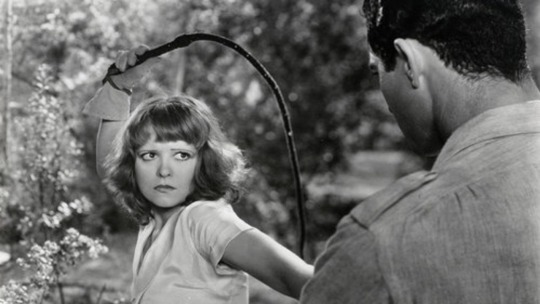
Call Her Savage (1932) Directed by John Francis Dillon, written by Tiffany Thayer and Edwin J. Burke
Adapted from a salacious novel by Tiffany Thayer, Call Her Savage was former silent star Clara Bow’s second-to-last film before her retirement at the age of 28. She plays Texas gal Nasa Springer, who’s always had a “savage” temper she can’t explain. In the space of 88 minutes she goes from wild teenager to jilted newlywed to young mother to prostitute to wealthy society girl to alcoholic before finally (it’s implied) settling down with her Native-American friend after discovering that she’s half-Native-American, something the audience has known all along.
Bow’s performance is frankly astonishing, to the point where you simply can’t believe what you’re seeing from one moment to the next. Sample scenes see her savagely whipping both a snake and her Indian friend, smashing a guitar over a musician’s head and violently wrestling her Great Dane… and that’s all in the first five minutes. She’s also frequently in a state of near undress throughout—one funny scene has her maids chasing her with a dressing gown because they’re afraid she’ll run down the street in her négligée.
The rest of the film includes alcohol, adultery, strong violence, attempted rape, murder, syphilis (not named, but heavily implied) and baby death. It’s a veritable smorgasbord of outrageous content and Bow is pure dynamite throughout. The film is also noted for being one of the first on-screen portrayals of homosexuality, when Nasa visits a gay bar in the Village frequented by “wild poets and anarchists”.

Smarty (1934) Directed by Robert Florey, written by Carl Erickson and F. Hugh Herbert
This deeply problematic sex comedy features pre-Code stars Joan Blondell and Warren William (often nicknamed ‘The King of Pre-Code’) at their absolute filthiest. Blondell plays Vicki, a capricious, happily married wife who gets an obvious kick out of taunting her husband, Tony (William). When he cracks and slaps her at a party, she divorces him and marries her lawyer, Vernon (Edward Everett Horton), whom she also goads into slapping her in a deliberate ploy to win back Tony.
Essentially, Smarty hinges on Vicki liking rough sex and it’s completely blatant about it, ending with her sighing “Hit me again” (the film’s UK title!) as they sink into a clinch on a couch, a rapturous expression on her face. It’s a controversial film because on the surface it looks like it’s condoning domestic violence, but it’s very clearly about Vicki’s openly expressed sexual desires—she wants to be punished and dominated, she just has a rather dodgy way of getting what she wants.
It might be unsophisticated, but in some ways Smarty is remarkably ahead of its time and ripe for rediscovery. To that end, it would make a fascinating double bill with Stephen Shainberg’s Secretary (2002). Oh, and it’s also chock-full of lingerie scenes (like most pre-Code films), if you like that sort of thing.

Massacre (1934) Directed by Alan Crosland, written by Sheridan Gibney, Ralph Block and Robert Gessner
Several pre-Code films (notably those made by Warner Bros) took a no-punches-pulled approach to their depiction of social issues, and star Richard Barthelmess actively sought out such projects. Here he plays Joe Thunderhorse, a Native American who’s become famous on the rodeo circuit. When he returns to his tribe to bury his father, he ends up fighting for their rights, taking on corrupt government officials and religious authorities.
Massacre is fascinating because on the one hand it’s wildly insensitive—Barthelmess and co-star Ann Dvorak are both cast as Native Americans—but on the other, it burns with a righteous fury and does more than any other Hollywood film (before or since) to champion the rights and highlight the injustices dealt out to Native Americans. That fury is encapsulated in a horrifying and rightly upsetting rape scene (it happens off-screen, but the cuts leave you in no doubt) that the film handles with surprising sensitivity.
In addition to being a passionate fight against racism and social injustice, the film also has some genuinely shocking sexual content. Most notably, Joe is seen making love to a rich white woman (Claire Dodd, who’s also in Smarty) who has an obvious sexual fetish, flaunting him in front of her friends and making a shrine in her room with Native-American paraphernalia.
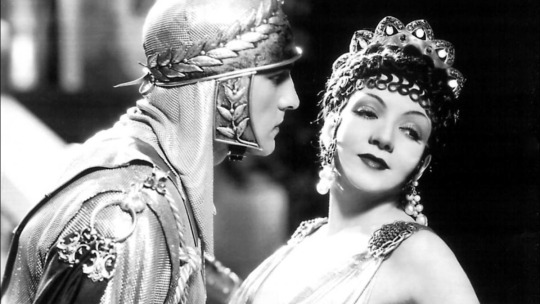
The Sign of the Cross (1932) Directed by Cecil B. DeMille, written by Waldemar Young and Sidney Buchman
Yes, this is Cecil B. DeMille again, but no list of weird and wild pre-Code films would be complete without the jaw-dropping ancient Rome epic, The Sign of the Cross. Adapted from an 1895 play by Wilson Barrett, it stars Frederic March as Marcus Superbus (stop sniggering at the back there), who’s torn between his loyalty to Emperor Nero (Charles Laughton) and his love for a Christian woman (Elissa Landi), while also fending off the advances of the Emperor’s wife, Poppaea (Claudette Colbert).
The film is racy enough in its sexual content alone: highlights include the famous scene of Claudette Colbert taking a nude milk bath and an erotic “lesbian” dance sequence, where Joyzelle Joyner’s “most wicked and talented woman in Rome” does ‘The Dance of the Naked Moon’ at Frederic March’s orgy, trying to tempt Landi’s virtuous Christian, to the obvious arousal of the gathered guests.
However, it’s the climactic gladiatorial-arena sequence that will leave your jaw on the floor. Lasting around twelve minutes, it includes: someone getting eaten by a tiger, a tied-up, naked women being approached by hungry crocodiles, pygmies getting chopped up by female barbarians, elephants stomping on heads, a gorilla approaching a naked woman tied to a stake, a man getting gored by a bull, and gladiators fighting to the death, complete with blood and gory injury detail.
The whole thing is genuinely horrifying, even for 2021. Best of all, DeMille pointedly critiques the audience (ourselves included), by showing a series of reaction shots ranging from intense enjoyment to abject seen-it-all-before boredom.
Matthew Turner (FilmFan1971) is a critic, author, podcaster and lifelong film fanatic. His favorite film is ‘Vertigo’. The films in this article are also listed here: Five of the Pre-Code Era’s Most Outrageous Films.
#preCodeApril#pre code april#precode april#hays code#mppa code#cecil b demille#clara bow#matthew turner#letterboxd#1930s films#1920s films#depression films
43 notes
·
View notes
Text
Interview with Mark A. Vieira, author of Forbidden Hollywood: The Pre-Code Era (1930-1934)

Mark A. Vieira is an acclaimed film historian, writer and photographer. His most recent book, Forbidden Hollywood: The Pre-Code Era (1930-1934): When Sin Ruled the Movies is now available from TCM and Running Press.
Raquel Stecher: Twenty years ago you wrote Sin in Soft Focus: Pre-Code Hollywood for Harry N. Abrams. Why did you decide to revisit the pre-Code era with your new TCM-Running Press book Forbidden Hollywood?
Mark A. Vieira: That’s a good question, Raquel. There were three reasons. First, Sin in Soft Focus had gone out of print, and copies were fetching high prices on eBay and AbeBooks. Second, the book was being used in classes at the USC School of Cinematic Arts. Third, Jeff Mantor of Larry Edmunds Cinema Book Shop told me that his customers were asking if I could do a follow-up to the 1999 book, which had gotten a good New York Times review and gone into a second printing. So I wrote a book proposal, citing all the discoveries I’d made since the first book. This is what happens when you write a book; information keeps coming for years after you publish it, and you want to share that new information. Sin in Soft Focus: Pre-Code Hollywood told the story of the Code from an industry standpoint. Forbidden Hollywood has that, but it also has the audience’s point of view. After all, a grassroots movement forced Hollywood to reconstitute the Code.
Raquel Stecher: Forbidden Hollywood includes reproduced images from the pre-Code era and early film history. How did you curate these images and what were your criteria for including a particular photograph?

Mark A. Vieira: The text suggests what image should be placed on a page or on succeeding pages. Readers wonder what Jason Joy looked like or what was so scandalous about CALL HER SAVAGE (’32), so I have to show them. But I can’t put just any picture on the page, especially to illustrate a well-known film. My readers own film books and look at Hollywood photos on the Internet. I have to find a photo that they haven’t seen. It has to be in mint condition because Running Press’s reproduction quality is so good. The image has to be arresting, a photo that is worthy in its own right, powerfully composed and beautifully lit—not just a “representative” photo from a pre-Code film. It also has to work with the other photos on that page or on the next page, in terms of composition, tone and theme. That’s what people liked about Sin in Soft Focus. It had sections that were like rooms in a museum or gallery, where each grouping worked on several levels. In Forbidden Hollywood, I’m going for a different effect. The photo choices and groupings give a feeling of movement, a dynamic affect. In this one, the pictures jump off the page.
Raquel Stecher: Why did you decide on a coffee table art book style format?
Mark A. Vieira: Movies are made of images. Sexy images dominated pre-Code. To tell the story properly, you have to show those images. Movie stills in the pre-Code era were shot with 8x10 view cameras. The quality of those big negatives is ideal for a fine-art volume. And film fans know the artistry of the Hollywood photographers of that era: Fred Archer, Milton Brown, William Walling, Bert Longworth, Clarence Bull, Ernest Bachrach and George Hurrell. They’re all represented—and credited—in Forbidden Hollywood.

Raquel Stecher: What was the research process like for Forbidden Hollywood?
Mark A. Vieira: I started at the University of Southern California, where I studied film 40 years ago. I sat down with Ned Comstock, the Senior Library Assistant, and mapped out a plan. USC has scripts from MGM, Universal and the Fox Film Corporation. The Academy Library has files from the Production Code Administration. I viewed DVDs and 16mm prints from my collection. I reviewed books on the Code by Thomas Doherty and other scholars. I jumped into the trade magazines of the period using the Media History Digital Library online. I created a file folder for each film of the era. It’s like detective work. It’s tedious—until it gets exciting.
Raquel Stecher: How does pre-Code differ from other film genres?
Mark A. Vieira: Well, pre-Code is not a genre like Westerns or musicals. It’s a rediscovered element of film history. It was named in retrospect, like film noir, but unlike film noir, pre-Code has lines of demarcation—March 1930 through June 1934—the four-year period before the Production Code was strengthened and enforced. When Mae West made I’M NO ANGEL (’33), she had no idea she was making a pre-Code movie. The pre-Code tag came later, when scholars realized that these films shared a time, a place and an attitude. There was a Code from 1930 on, but the studios negotiated with it, bypassed it or just plain ignored it, making movies that were irreverent and sexy. Modern viewers say, “I’ve never seen that in an old Hollywood movie!” This spree came to an end in 1934, when a Catholic-led boycott forced Hollywood to reconstitute the Code. It was administered for 20 years by Joseph Breen, so pre-Code is really pre-Breen.

Raquel Stecher: What are a few pre-Code films that you believe defined the era?
Mark A. Vieira: That question has popped up repeatedly since I wrote Sin in Soft Focus, so I decided which films had led to the reconstituted Code, and I gave them their own chapters. To qualify for that status, a film had to meet these standards: (1) They were adapted from proscribed books or plays; (2) They were widely seen; (3) They were attacked in the press; (4) They were heavily cut by the state or local boards; (5) They were banned in states, territories or entire countries; and (6) They were condemned in the Catholic Press and by the Legion of Decency. To name the most controversial: THE COCK-EYED WORLD (’29) (off-color dialogue); THE DIVORCEE (’30) (the first film to challenge the Code); FRANKENSTEIN (’31) (horror); SCARFACE (’32) (gang violence); RED-HEADED WOMAN (’32) (an unrepentant homewrecker); and CALL HER SAVAGE (’32) (the pre-Code film that manages to violate every prohibition of the Code). My big discovery was THE SIGN OF THE CROSS (’32). This Cecil B. DeMille epic showed the excesses of ancient Rome in such lurid detail that it offended Catholic filmgoers, thus setting off the so-called “Catholic Crusade.”
Raquel Stecher: It’s fascinating to read correspondence, interviews and reviews that react to the perceived immorality of these movies. How does including these conversations give your readers context about the pre-Code era?
Mark A. Vieira: Like some film noir scholars, I could tell you how I feel about the film, what it means, the significance of its themes. So what? Those are opinions. My readers deserve facts. Those can only come from documents of the period: letters, memos, contracts, news articles. These are the voices of the era, the voices of history. A 100-year-old person might misremember what happened. A document doesn’t misremember. It tells the tale. My task is to present a balanced selection of these documents so as not to stack the deck in favor of one side or the other.
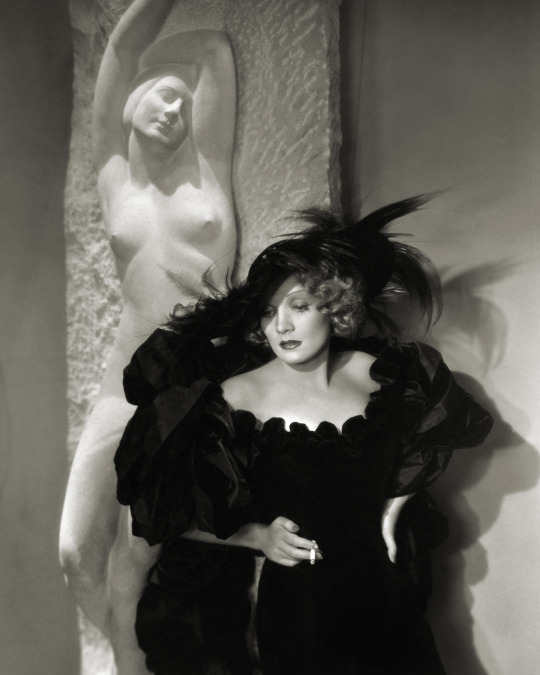
Raquel Stecher: In your book you discuss the attempts made to censor movies from state and federal government regulation to the creation of the MPPDA to the involvement of key figures like Joseph Breen and Will H. Hays. What is the biggest misconception about the Production Code?
Mark A. Vieira: There are a number of misconceptions. I label them and counter them: (1) “Silent films are not “pre-Code films.” (2) Not every pre-Code film was a low-budget shocker but made with integrity and artistry; most were big-budget star vehicles. (3) The pre-Code censorship agency was the SRC (Studio Relations Committee), part of the Motion Picture Producers and Distributors Association (MPPDA)—not the MPPA, which did not exist until the 1960s! (4) The Code did not mandate separate beds for married couples. (5) Joseph Breen was not a lifelong anti-Semite, second only to Hitler. He ended his long career with the respect and affection of his Jewish colleagues.
Raquel Stecher: How did the silent movie era and the Great Depression have an impact on the pre-Code era?
Mark A. Vieira: The silent era allowed the studios the freedom to show nudity and to write sexy intertitles, but the local censors cut those elements from release prints, costing the studios a lot of money, which in part led to the 1930 Code. The Great Depression emptied the theaters (or closed them), so producers used sexy films to lure filmgoers back to the theaters.
Raquel Stecher: TCM viewers love pre-Codes. What do you think it is about movies from several decades ago that still speak to contemporary audiences?
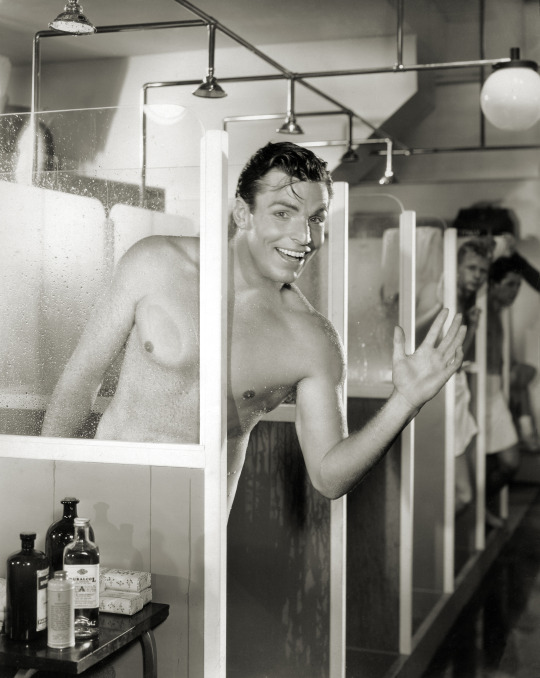
Mark A. Vieira: You’re right. Because we can see these films so readily, we forget that eight decades have passed since they premiered. We don’t listen to music of such a distant time, so how can we enjoy the art of a period in which community standards were so different from what they are now? After all, this was the tail end of the Victorian era, and the term “sex” was not used in polite society. How did it get into films like MIDNIGHT MARY (’33) and SEARCH FOR BEAUTY (’34)? There were protests against such films, and there were also millions of people enjoying them. What they enjoyed is what TCM viewers enjoy—frankness, honesty, risqué humor, beautiful bodies and adult-themed stories.
Raquel Stecher: What do you hope readers take away from your book?
Mark A. Vieira: One thing struck me as I wove the letters of just plain citizens into the tapestry of this story. Americans of the 1930s wrote articulate, heartfelt letters. One can only assume that these people were well educated and that they did a lot of reading—and letter writing. I want my readers to read the entire text of Forbidden Hollywood. I worked to make it accurate, suspenseful and funny. There are episodes in it that are hilarious. These people were witty! So I hope you’ll enjoy the pictures, but more so that you’ll dive into the story and let it carry you along. Here’s a quote about SO THIS IS AFRICA (‘33) from a theater owner: “I played it to adults only (over 15 years old). Kids who have been 12 for the last 10 years aged rapidly on their way to our box office.”
#pre-Code#TCM#Forbidden Hollywood#pre-code films#interview#jean harlow#mae west#ginger rogers#Depression era#1930s#Raquel Stecher
255 notes
·
View notes
Text
It's a nice piece, but I think you're confusing heterosexual with heteronormative.
Heterosexual is a relationship between two people of different genders.
Heteronormative is a relationship between two people of different genders where the male is always dominant and the female is always subordinate.
For decades, the only relationships we saw in media were heteronormative by law. Under the Motion Picture Production Code, not only was homosexuality forbidden, but every heterosexual romance had to end with the female being dominated by the male, which adds a strong cringe factor to old romance movies. Equality was forbidden for over half a century. This inequality lingered long after the MPPA. The first non-heteronormative straight romance didn't happen until When Harry Met Sally in 1989, and it was rare for decades after that. It's still not common today.
By all means, attack heteronormativity whenever and wherever you see it! But could we also show some praise to those creators who go out of their way to show positive, non-heteronormative straight romances?
The great thing about RWBY is that none of the main straight relationships are heteronormative. Jaune didn't dominate Pyrrha, Ren doesn't dominate Nora, and Oscar doesn't dominate Ruby.
There's only one heteronormative relationship in RWBY, and that's between Adam and Blake. The story shows very clearly that this relationship was highly toxic, and that it took Blake a long time to recover from the poison. But we don't see that kind of relationship with any other couple.
So let's enjoy RWBY for the positive examples of romance that it's showing people, including how to have a positive gay romance and how to have a positive, non-heteronormative straight romance.
By your request, I won't tag this post.
Oh there’s more R/osegarden bullshit on Twitter. It’s going to be a NIGHTMARE I can tell already. So, let’s address this, shall we? ALL this drama is the result of miscommunication. I’ve been here long enough to specifically remember the writers saying that the age gap between Ruby and Oscar was only two years. Thus, in Volume 5, they would be 16 and 14, respectively. And then in Volume 6, the actors said that Ruby was now 17 while the dialogue still referred to Oscar as 14. THAT’S a bit of a potential problem. A 14 year old and a 17 year old dating DOES have inherent issues, yes. I understand the discomfort THERE. But I also remember the writers saying that it was just two years. So, I think this is the result of a miscommunication between the writers and actors, and the result is THIS whole mess. All this shouting over a miscommunication. Some days I really wish the writers would just step in and just outright SAY what the gap is, clarify it once and for all, cause I’m tired of this bullshit.
But most importantly, divorced from said bullshit, R/osegarden is just bland, heteronormative drivel. It’s just boring, uninspired fluff that only REALLY exists to the extent that it does due to heteronormativity and the occasional dash of spite due to all the bullshit (Cause frankly, I’m not convinced that many of the shippers would more than vaguely care if it wasn’t for this). Ignoring the accidental age gap issue I’d just find it completely ignorable, and without this bullshit I wouldn’t care one way or the other. It would simply pass me by. Like it used to. I miss those days. And of course, there’s the whole “Oscar slowly merging with a thousands year old man” thing in canon which would make ANY romance for Oscar awkward.
Honestly, the BEST thing we could do, on all “sides” here, is to just ignore it utterly. I know we’re not gonna, the shippers are already so invested, but ideally we’d all just let this boring ass ship and all the bullshit surrounding it die. Also, PLEASE don’t tag R/osegarden shippers in this. I’m leaving it UNtagged for a reason. I don’t want any of that bullshit, I just want to explain WHY this is happening from my perspective and attack heteronormativity a bit. And as for who to ACTUALLY ship Ruby with, well Weiss and Penny are RIGHT THERE. And, you know, to a lesser extent Blake, Jaune, Pyrrha, maybe Nora, possibly Emerald depending…
32 notes
·
View notes